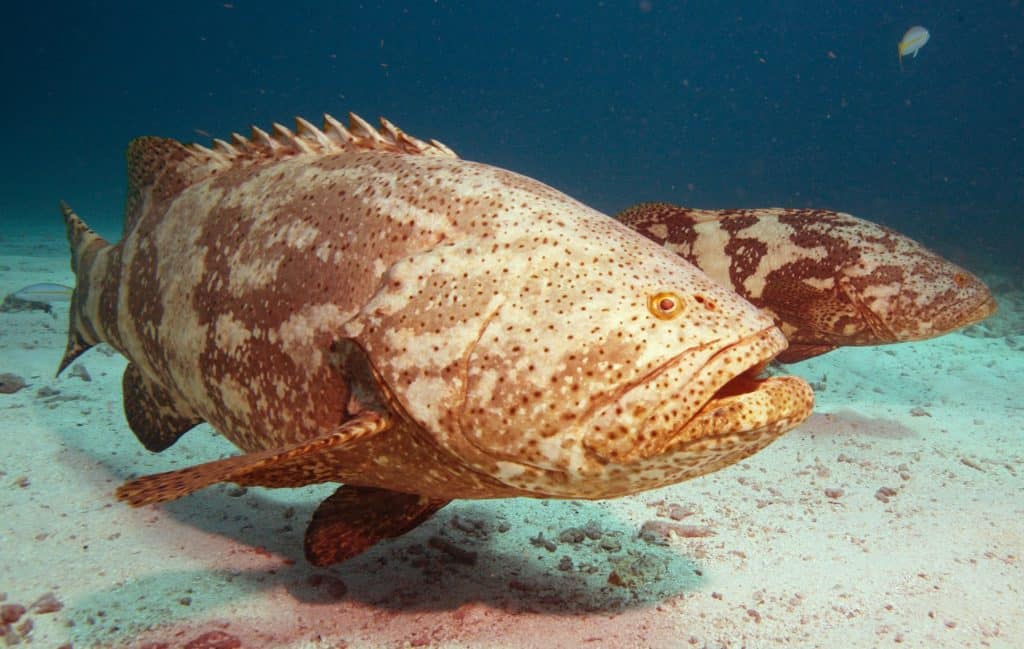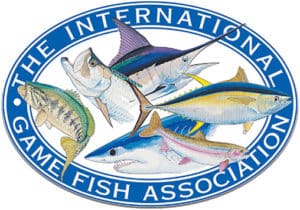Contact us if your target is Grouper in Costa Rica
See our Grouper Photo Gallery

Grouper
These tropical reef fish prefer the deeper rocky reefs of the Pacific Ocean. They are classical almond-shaped groupers, with pointed snouts and large, round eyes, a continuous spiny dorsal fin, and a rounded caudal (tail) fin. Usually light brown to pale grey, they have a series of wide darker brown bands that extended in their fins, and small dark spots along the edges of some bands.
Characteristics of the Grouper
- One of physical attributes of a grouper is their huge mouth and bulky body. They can measure up to over one meter in length and weighs approximately 100 kilograms. They are noted on having mostly a brownish or greenish dull colors but other were tagged to have brighter color. Their mouth doesn’t hold enough teeth to bite their prey so usually they will swallow their prey.
Where to find a Grouper in Costa Rica?
These tropical grouper is reef-associated at depths from 265-425 feet (80-130 m).
Why fishing Grouper in Costa Rica?
Grouper fishing season in Costa Rica is year round.
Important notes about the Grouper
They often appear threatening and fearsome because of their size. The truth is that groupers are relatively timid fish.
They have enormous mouths but have few teeth. Their teeth and jaws are used to crush their prey rather than bite it.
In fact they usually swallow their food whole instead of ripping pieces from it.
Grown-up groupers usually feed on a variety of fish such as snappers, wrasses, parrotfish, and damselfishes. Additionally mature groupers are also killing octopus, lobster, crab, and crustaceans. Young groupers have a tendency to eat crustaceans, plankton, microalgae and small microorganisms.
Average life span: The Grouper have relatively long-lived; some groupers have lived for more than 30 years.
Methods for catching Grouper
They can be fished with different techniques such as:
Bottom Fishing Inshore/Offshore
Bottom fishing is the go-to technique for countless anglers out there, and it’s easy to see why. Known for its fun, action-packed outings, it can produce catches of pretty much any size., bottom fishing involves lowering a weighted hook or lure to the bottom of the water column. Sounds simple enough, right? But there’s a bit more to it than that.
One of the things that makes bottom fishing so addictive is the fact that you can practice it in an endless number of ways. Depending on the water you’re fishing, and what you want to catch, you can choose from a number of fishing styles. You can use different bait and tackle, and play around with different presentations.
Trolling
This may be the most frequent because of the small boats that move around the fishing areas. With this technique we can find areas where the active specimens are located, where we can then apply other more lively fishing methods. You can also do bottom fishing at the points where we find the active fish.




